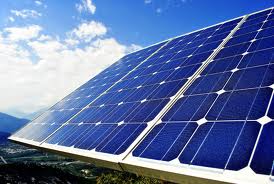Three Trends of Solar Industry for 2014

Solar, as a green energy, will undoubtedly tag to gain tractiion. In 2014, market demand in China, Japan and the US is estimated to account for 50% of total shares; but with market recovery of European market as well as the rise of emerging countries, global solar supply and demand is increasingly balanced. There will be three major trends for 2014 solar industry, according to Gonghui Huang, analyst in EnergyTrend, a division of Trendforce.
Efficient products become mainstream
Though a lot of manufacturers are actively developing solar technologies, the major demand will still be crystalline silicon products. And polysilicon products, as it is cheap and specifications are simpler for plant design and inverter matching, are most popular by market.
Since 2013, demand wattage of component has up to 250 from 240 watts; the most common solar cells are 17.2 ~ 17.6% of polycrystalline silicon solar cells. And with the continuous improvement of silicon chips and other efficient products, downstream manufacturers also hope to get higher-wattage parts, which will increase shares to 17.6~17.8% by the first half of 2014.
Storage products expand demand
As countries reduce even cancel KWH subsidy, most countries are adjusting the solar development pace, and encourage in-house use or adjust peak demand. At the same time, with the slowdown development of large-scale power plants in mature countries, small-wattage system grows up in residential field; energy storage becomes an indispensable trend of solar application.
Now, in addition to cost reduction of solar power, energy subsidy in Germany and Japan will boost the market.
EnergyTrend foresees low possibility of only selling storage system; and the direction is existing solar vendors offer users entire system. Especially for China-based manufacturers with largest component export, given the pricing and quantitative restrictions in Europe, the best business mode in the future is selling entire system. At present, small solar home system has energy storage mainly at 3 ~ 7kWh. Usually, cost will double, if addressing storage system; but driven by subsidy and the continual price falling of future storage batteries, price will be around 1.3 – 1.7 times higher than original solar energy system. With market expansion as well as electricity price continuing to climb, storage will see future development in 2014.
Merger and acquisition
Merger and shuffle is one of highlights in 2013; not only China-based Tongwei took over Hefei LDK; oversea Solarworld also acquired Bosch Solar; and Astronergy launched the plan to buy Conergy’s components plant. With market gradually warming, across the sales target in next year and development trend in downstream, 2014 market shares will concentrate in first-tier manufacturers.
“Through observation, we can find which companies exit from market before thorough decline to know the impact to market shares. With the declining cost of solar power, increasing large-scale oil and grid companies are throwing eyes to solar energy; 2014 will see more energy enterprise re-classifying solar energy into energy development roadmap. Solar energy companies need to clear who will be the most powerful player in the future market,” says Huang.
